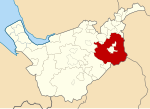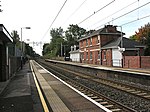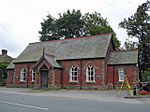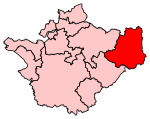Woodford Aerodrome
Aircraft assembly plants in EnglandAirports in Greater ManchesterBAE Systems facilitiesDefunct airports in EnglandHistory of transport in Greater Manchester ... and 2 more
Military history of CheshireUse British English from May 2013

Woodford Aerodrome (ICAO: EGCD) is a former airfield and aircraft factory at Woodford, Greater Manchester, England, 6 NM (11 km; 6.9 mi) north of Macclesfield. It was opened by the Avro company after the First World War and became an important production centre for military aircraft in the Second World War. Notable planes made at the factory include the Avro Anson, Avro Lancaster, Avro Shackleton and Avro Vulcan. After almost 80 years of aircraft manufacture at the site, Woodford was closed and sold off by BAE Systems in 2011.
Excerpt from the Wikipedia article Woodford Aerodrome (License: CC BY-SA 3.0, Authors, Images).Woodford Aerodrome
York Gardens,
Geographical coordinates (GPS) Address Nearby Places Show on map
Geographical coordinates (GPS)
| Latitude | Longitude |
|---|---|
| N 53.338055555556 ° | E -2.1488888888889 ° |
Address
York Gardens
York Gardens
SK7 1GD
England, United Kingdom
Open on Google Maps









